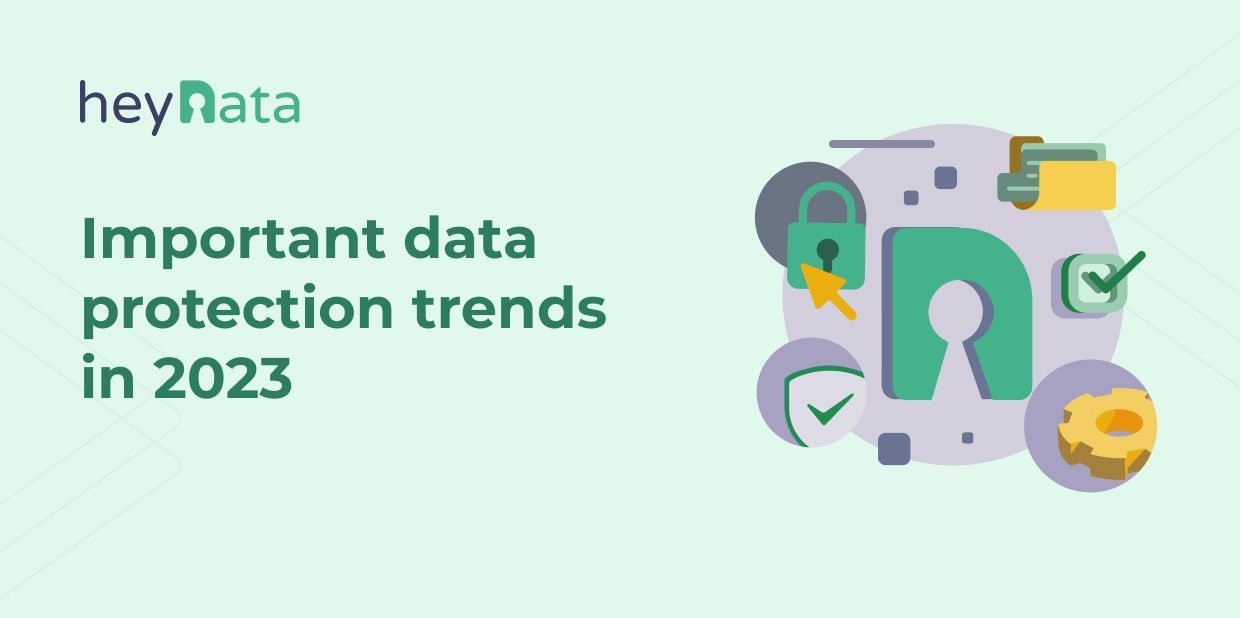
Key data protection trends in 2023

The data protection laws are becoming increasingly stringent worldwide to promote more transparency and better protection of consumer rights when it comes to handling personal data on the internet or through other means such as cloud storage platforms or mobile apps. Therefore, you must ensure compliance with various regulations in your company, as failure to do so can result in fines or, worse, a poor reputation for mishandling your customers' private data. The ever-changing digital landscape and the influx of new technologies make data protection increasingly complex, so in the new year of 2023, you should stay up to date on the key trends in data protection.
New Trends in Data Protection
The digital age has brought many unique challenges in terms of data protection and privacy, so it's not surprising that new trends and solutions are constantly emerging. To keep up with the latest threats, you need to develop a comprehensive strategy to understand and implement the latest security measures. This may include the use of advanced artificial intelligence algorithms such as biometrics, two-factor authentication, strong encryption standards, and secure data transmission platforms. Implementing these technologies helps ensure compliance with regulations and strengthens your ability to protect sensitive data. Additionally, having an effective response plan is one of the best ways to quickly contain potential risks related to data breaches.
Data Localization Becomes Top Priority
The increasing use of cloud services makes it easier than ever to access, store, and share data across multiple systems. However, this also makes the data more vulnerable to threats from hackers. To protect against these risks, many countries are introducing laws that require companies to store certain types of data within their borders. This is known as data localization and can help keep sensitive information secure. This practice can protect companies from potential threats, but it also brings a range of challenges such as compliance with standards and additional costs associated with local data storage.
Techniques to Enhance Data Privacy in Data Processing
Another trend gaining traction in companies is the use of Privacy Enhancing Techniques (PETs). These are methods that protect personal data during its processing or transmission between different systems. PETs provide an additional layer of security by ensuring that only authorized parties have access to sensitive data while still allowing the necessary analysis capabilities. Popular examples of PETs are tokenization and encryption, both of which serve to mask or encrypt sensitive data to prevent unauthorized access.
AI Management and Potential Risks to Personal Data
AI management systems will be increasingly adopted in 2023 as they automate processes, increase efficiency, and reduce human errors. While AI management tools can offer numerous benefits, they also pose potential risks, such as misuse or mishandling of personal data or biased outcomes due to a lack of diversity in training datasets. To combat these risks, companies should pay attention to developing appropriate structures when utilizing AI-driven processes, such as establishing controls on who has access to sensitive data or regularly reviewing algorithms for accuracy and fairness.
Learn more: Safeguarding Data Protection and Compliance when Utilizing AI
Centralization of Data Privacy UX
The centralization of your company's User Experience (UX) design can make it easier for key stakeholders, including customers and employees, while also providing cost savings compared to managing multiple separate UX designs for different platforms or applications. Centralizing UX design allows stakeholders to access needed features more easily from a single platform, reducing the time spent navigating through various settings menus or configurations. Additionally, any changes made at the central level are automatically applied to all platforms, eliminating the need to manually update configurations on each individual platform, which can be time-consuming and costly depending on the size and scope of your company's IT infrastructure.
Preparing in 2023
In 2023, it is important to be aware of new data protection trends to ensure the adequate protection of your customers' data at all times. From developing appropriate structures when implementing AI-driven processes such as AI management tools, to implementing techniques to enhance data privacy like tokenization, improving control over remote access, localizing certain types of data, and centralizing the user experience, companies must follow a holistic approach when evaluating their current security measures in terms of potential threats and compliance with applicable regulations. By diligently tracking security trends and best practices, you can minimize risks while maximizing your customers' trust, making 2023 a successful year!


